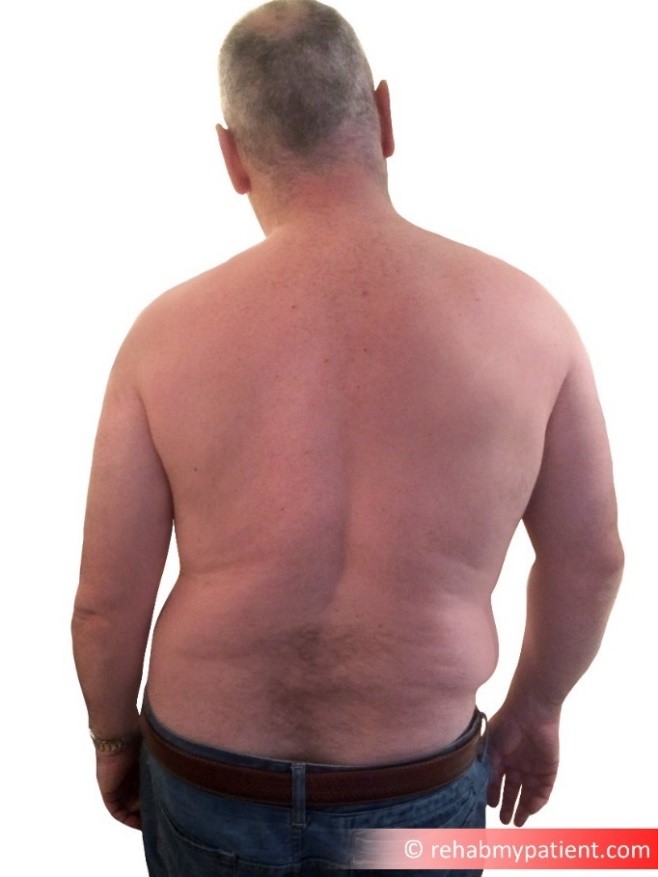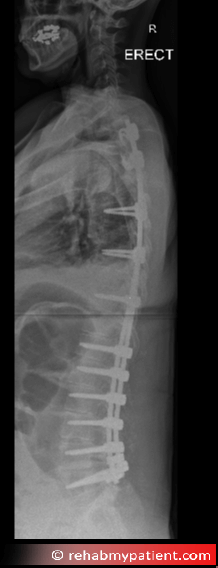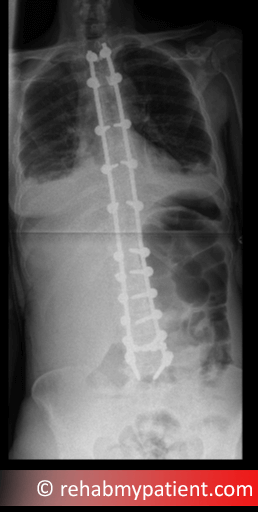
Scoliosis is a lateral curve in what would normally be a straight spine. To see a scoliosis, you need to view the spine looking from the back.
It’s quite normal to have a very mild scoliosis. It’s actually rare to find the spine completely straight, it often deviates slightly from the midline.
When you view the spine from the side, the spine should end up showing a mild roundness within the upper part of the back and an arch in the lower part of the back. That’s completely normal and does not refer to a scoliosis.
What Causes a Scoliosis?
There are many different and possible causes. Some experts suggest that genetic and heredity factors play a role. Sometimes a scoliosis can be caused by simply having a small imbalance in the legs, resulting from something as minor as a sprained ankle. A difference in pelvic height or position might contribute to a scoliosis. Hobbies and sports can cause a scoliosis, especially if they are one sided. Golf is a common example of this, where young professional or amateur players can deviate to the side they hold a golf club.
When scoliosis occurs in children, it is often more serious and can be due to developmental issues. If you notice your child has a strong curvature of the spine, you should see a doctor or consultant to have this investigated.
A scoliosis can also be acute, i.e. short lasting. This occurs when the back is in acute muscle spasm, or there is a prolapsed disc in the spine. This will deviate the spine laterally to shift pressure away from the painful part of the back. As symptoms improve, so will the scoliosis which will reduce in severity.

Acute Lumbar Scoliosis
How to Treat Scoliosis:
- Braces
Bracing is often the best form of treatment for those who have a spinal curve between 25 and 40 degrees, especially when the bones are still maturing and the individual has at least two years of growth remaining. Bracing works to halt the curve progression. It might provide you with a temporary correction, but the curve will often end up assuming its original magnitude whenever the brace is removed.
- Therapy
Some practitioners specialize in the treatment of scoliosis. Often these practitioners have undertaken further or advanced training. Through a series of exercises (such as hanging, child’s pose, and other stretches) and manual therapy, scoliosis can be reduced and its development minimized.
- Surgery
For those with a curve beyond 40-50 degrees, surgery is often the recommended treatment. The goal is to make sure the curve isn’t going to get worse, but surgery can also straighten the spine if metal rods are used.


X-ray showing post-surgical treatment for severe scoliosis
Tips:
- Scoliosis has been known to run in families. Children, especially daughters of those with scoliosis, are at an increased rate of getting the condition.
- Girls are more likely than what boys are to end up with a significant curve requiring treatment.
- Missing or abnormally short legs or arms has been associated with scoliosis.
- Spinal bones that are pushed forward can cause scoliosis.
- Other disorders that are related to tissue development within the womb can cause individuals to develop scoliosis.
- Children who spend many hours playing golf over a number of months/years can develop a scoliosis.
Sign Up
Sign up for your free trial now!
Get started with Rehab My Patient today and revolutionize your exercise prescription process for effective rehabilitation.
Start Your 14-Day Free Trial